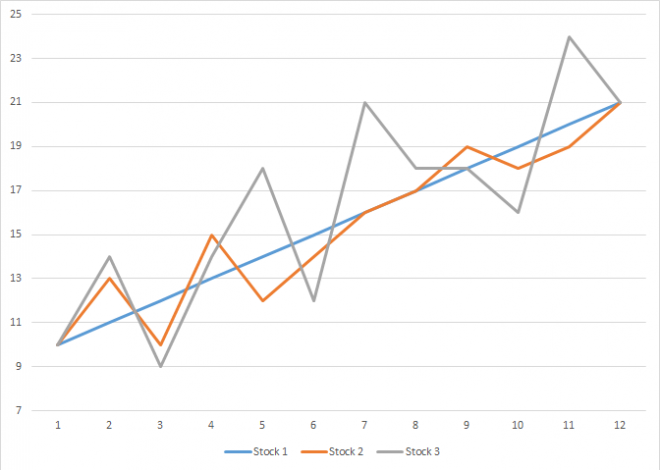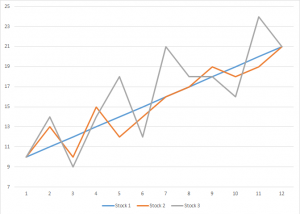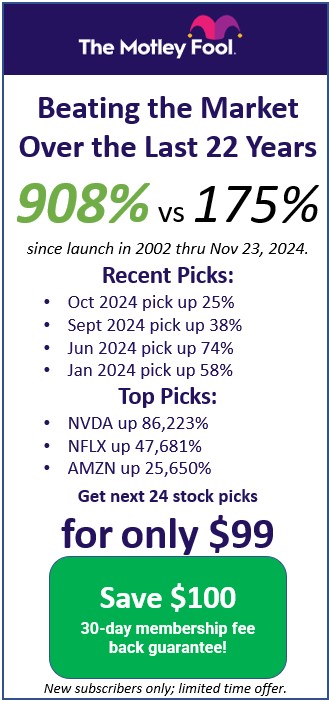What is a Brokerage?
A brokerage is a company that allows individuals to buy and sell investments, such as stocks, bonds, and mutual funds. Through a brokerage, investors can access financial markets and make trades according to their goals and strategies. Brokerages may offer various services, tools, and resources to help investors manage their portfolios and make informed decisions.
When an investor takes an account with a licensed brokerage firm that allows the investor to deposit money and place investment orders through the brokerage firm.
There are several different types of brokerage accounts. Full-service brokers provide investment advice and charges high fees for their services. Most online brokers provide less services at a far lower cost. They offer brokerage accounts with a secure interface were the investors can place trade orders.
Securities
To trade these securities, an individual would need to open a brokerage account with a broker-dealer.
- Cash: Domestic and Foreign Exchange Markets
- Individual Securities: Bonds, Stocks
- Structured Products: Mutual Funds, Exchange Traded Funds (ETFs), Exchange Traded Products (ETP), Unit Investment Trusts (UIT)
- Derivatives: Options, Futures, Future Options.
Broker-Dealers
Brokers are people who bring two interested people together to make a trade, they are the middle man of the transaction. Dealers, on the other hand, are usually directly involved in the transaction. Dealers would be like a storefront, they buy goods from their own suppliers, then sell them to the final customer. Brokerages fall in the middle and are called, broker-dealers. When you want to buy or sell an investment, they work to match you with someone who is willing to make that trade, (acting like a broker).
To speed up the process, they also usually have their own reserves of the most commonly-traded stocks, so you might end up buying from (or selling to) the brokerage itself. This way, they are also acting like a dealer. The largest broker-dealers, or firms, in the United States are Charles Schwab, Fidelity Investments, E*Trade, and TD Ameritrade.
Selecting which firm to open a brokerage account with depends on a number of factors, most notably:
- Types of investments and securities the investor desires to trade.
- Commissions and fee costs associated with the desired trades.
- Level of investment guidance and research provided by the broker-dealer.
- Account access interfacing services (i.e. the ability to place trades online, by phone, or other means).
The process for purchasing and selling investments and securities has a number of activities that need to occur, both visibly and behind the scenes, in order to execute a trade correctly.
Security and Investment Operational Activities
The buy or sell process within a brokerage account is called trade execution. Trade execution is where an investor confirms their desire to buy or sell an investment or security. Once the investor signals their intention to place a trade, it starts the trade capture process.
A broker-dealer is required to record every aspect of a trade execution for both recordkeeping, and to facilitate the transaction. This process includes verifying the trade details, such as the security type, quantity, and price, and confirms that the trade is in compliance with relevant regulations and policies. They also perform any special instructions associated with the trade.
After the broker-dealer records the trade, it moves to the trade validation stage. In this stage, the broker-dealer uses their internal systems to make sure the trade is valid. This helps to lower the risk of making mistakes when completing an order.
During trade validation, the broker-dealer checks if there is enough money to make the purchase or, in case of selling, if the investment has enough value for what the investor wants. They might also look at an investor’s trading habits to try to stop trades that seem to be dishonest or fake.
Once the trade is validated, the broker-dealer moves into the fulfillment phase, which involves settling the trade and transferring ownership of the securities and funds between the buyer and seller.
Trade fulfillment is dependent on the trade agreements that a broker-dealer has in place. Often brokerages will hold popular securities in reserve and will have contracts with other broker-dealers to fill trades for other assets. The contracts ensure that trades requested are fulfilled at a reasonable speed that is reflective of the investment’s publicly stated value. These trade agreements will also outline the speed at which the settlement will occur.
Settlement happens when both people involved in a trade get what they are supposed to receive. For example, if Investor X wants to sell an investment, they should get money when the trade is completed. But for Investor X to sell the investment, someone else needs to want to buy it. Let’s say Investor Y wants to buy the investment from Investor X; when the trade is finished, Investor Y will give money to Investor X and get the investment in return.
When the settlement is done, the broker-dealer starts the trade reporting phase. Every time a trade is made, the broker-dealer who takes care of the trade has to report it. They do this for both internal and external reporting.
Internal reporting makes sure that the agreed trade has been completed properly. For external reports, there are three groups that receive the information. First, the person who owns the brokerage account needs to know about the trades so they can get accurate statements.
Second, each state in the U.S. has a group that oversees trading. The broker-dealer reports the trade to this group to make sure it follows state laws about investments.
Finally, the trade is reported to the Internal Revenue Service (IRS). This makes sure all trades that could be taxed are recorded, so taxes can be collected when it’s time to file taxes.
Deviating from the listed steps is prohibited. Brokerage accounts held by broker-dealers are subject to regulation from individual states, the U.S. Securities and Exchange Commission (SEC), and the Financial Industry Regulatory Authority (FINRA). Each of these regulatory bodies requires that broker-dealers follow this pattern for securities and investment operations or face stiff penalties.
Operations of a Securities and Investment Office
Given that broker-dealers – and by extension brokerage accounts – are regulated by the SEC and FINRA, a number of other operations within the role of the broker-dealer are also highly regulated in addition to the actual trade process. These operational processes included, but are not limited to the following:
- Receipt of the customer’s funds – i.e. checks, wires, money orders, etc.
- Handling of customer complaints.
- Adherence to state level regulations, referred to as Blue Sky Laws.
- How new securities and investments are offered to the public.
- Properly reviewing and documenting reviews of both transactions and customers.
- Ensuring that compensation to advisors and consultants is fair and within market norms.
- Procedures for prohibiting insider trading.
- Sales practices
- Advertising practices
The majority of the operational regulations that broker-dealers are subject to, stem from the Securities Act of 1933, Securities Exchange Act of 1934, Investment Company Act of 1940, and Investment Advisers Act of 1940. The purpose of each of these regulations is to promote fairness and transparency with investors from securities and investments being offered by broker-dealers. Looking at each step of the process while considering these laws helps make sure that customers of broker-dealers get the right information they need. This lets them make smart choices about their investments and securities.
Broker-Dealer Commission Arrangements & Environments in Which Security and Investment Services are Offered
All securities and investments have a cost. The cost may come in the following forms:
- Commissions: Front-Load, Back-Load, Fund expenses
- Spreads
- Advisory Fees
These possible costs for investments and securities can apply to a brokerage account. They are how broker-dealers make money and pay their workers. Knowing how these costs work can help investors decide the right investments for their account to reach their goals according to state rules and objectives.
Commission Types
Front Load Commission
There are four common types of commission arrangements: front-load, back-load, 12b-1, and flat fees. A front-load commission is when an investor pays a percentage of their investment upfront. Typical front-load commissions for packaged structured products range from 0% to 5.75%, depending on the total amount invested. For example, if an investor wants to buy a front-loaded investment with $100,000 and the broker-dealer charges a 4% commission, the investor will pay $4,000 to enter the investment. This means the actual investment will be $96,000.
Back Load Commission
Unlike a front-load commission, a back-load commission charges a fee based on a percentage of the investment when the investor sells it. For example, if an investor buys a back-loaded investment with $100,000, the broker-dealer doesn’t charge any fee when the money is invested. But, when the investor sells the investment, the sale is typically charged a 1% to 3% fee. So, if the investor sells a $100,000 back-loaded investment, they would pay $1,000 to $3,000 to the broker-dealer.
12b-1 and Fund Expenses
At first glance, a back-loaded investment might seem better. However, there are two more costs to consider – fund expenses and 12b-1 fees. Fund expenses are part of any structured product and are necessary to manage investments within the product. 12b-1 fees, on the other hand, are recurring commissions between structured products and broker-dealers. Front-loaded investments usually have 0.10% to 0.25% in embedded 12b-1 fees, while back-loaded investments often have 0.65% to 1.00% in embedded 12b-1 fees.
For investors, choosing a back-loaded investment often means giving up 0.75% in returns each year. In a $1,000,000 brokerage account, this means paying an extra $7,500 annually in commissions.
FINRA recommends always comparing total costs of front-loaded and back-loaded investments with the FINRA Fund Analyzer.
Flat Fee
Due to customer demand and new regulations, many broker-dealers now prefer a flat commission fee. This replaces the load fees and often removes the 12b-1 fees as well. For example, some of the largest broker-dealers offer stocks and non-loaded mutual funds for $5 to $40 per trade – for both buying and selling. The advantage of a flat commission fee is that it offers more transparency in costs, and often results in lower overall expenses in larger balanced brokerage accounts.
Spreads
Spreads are another indirect way for broker-dealers to make money, often in addition to a flat commission fee. Instead of a load, a spread is a small difference between the public trading price of a security and what the broker-dealer keeps.
For example, let’s say Stock Z is selling for $32.33 publicly, and an investor wants to sell 100 shares of Stock Z. The investor’s broker-dealer might offer to buy Stock Z for $32.30, knowing it can be resold to another dealer for $32.33. The three-cent difference is the broker-dealer’s spread. In this case, the broker-dealer makes an extra $3.00 on the transaction using a spread. Spreads can also apply to buying trades.
Advisory Fees
For investors who want to avoid commission fees and need help with investment guidance or day-to-day management, they can choose an advisory fee account. However, it’s important to note that fund expenses still apply in this arrangement. There are two types of fee-only arrangements:
- Percentage of Assets Under Management (AUM): For example, if you have $100,000 in a brokerage account and the advisory fee is 0.50%, the broker-dealer will charge $500 annually to manage the account. This type of arrangement keeps the broker-dealer neutral as their compensation does not change based on investment selection.
- Flat Fee: Instead of a percentage of AUM, a flat fee of $250 to $1,500 is charged no matter the account balance. Again, the broker-dealer remains impartial to security and investment choices.
These cost arrangements – commission, spreads, and advisory fees – are available through either a Registered Investment Advisor (RIA) or a broker-dealer directly. With a broker-dealer, an investor can either manage their own investments or use a computer-guided model for assistance (also called a robo-advisor).
Choosing an RIA usually provides the highest level of guidance, research, and investment options but also tends to be more expensive. Managing investments on your own in a brokerage account can reduce expenses but may limit guidance, research, and investment options. Computer-guided models are popular for investors who don’t need face-to-face service.
Investors should select the option that best aligns with their investment goals and preferences.





